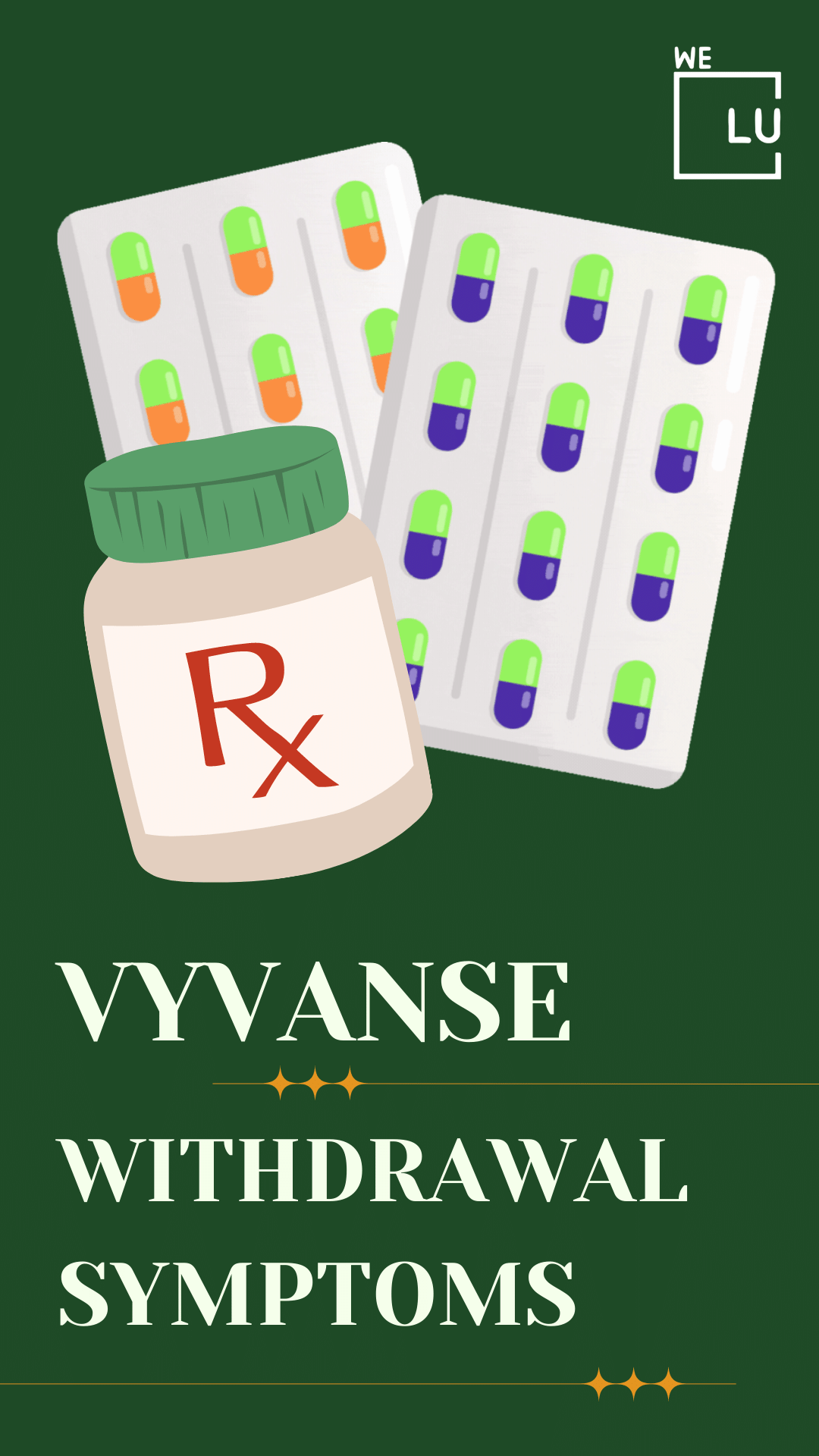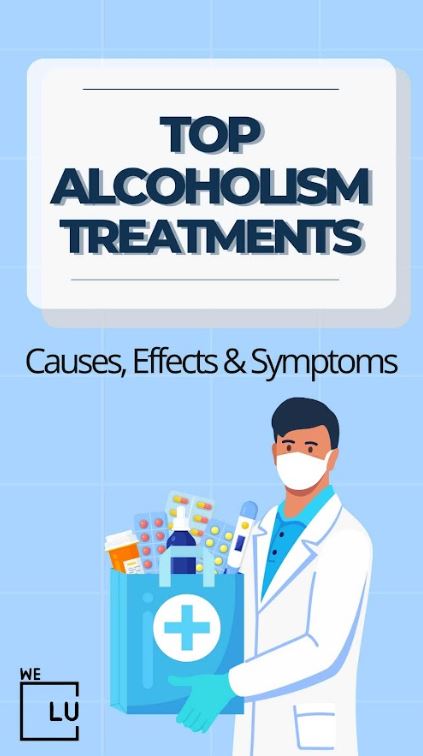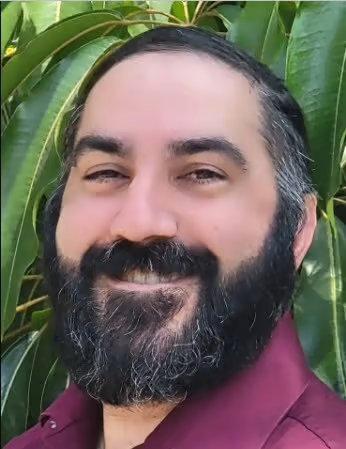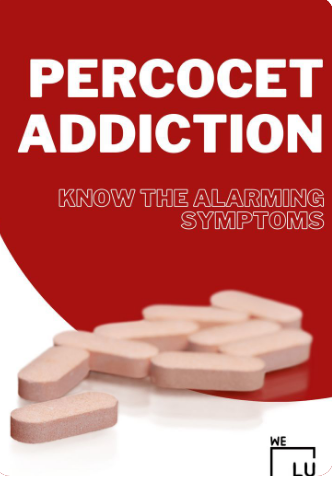Heroin Street Names, Slang for Heroin Use
Heroin is an illicit and very addictive opioid drug. It produces drowsiness, pain relief, and euphoria. Heroin abuse is becoming more and more common as the country suffers from the ongoing opioid crisis. Identifying the signs of heroin addiction and knowing the common street name for heroin may help save a life. It’s vital to be mindful of the different heroin street names to detect if someone you know, like your sibling, spouse, or friend, is abusing the drug.
What are the street names for heroin? Street names for heroin consist of continuously evolving words and phrases that refer to everything from sellers, buyers, the drug itself, and everything in between. This “insider drug code” serves several purposes. It makes illicit trades easier to discuss publicly and less noticeable than using certain words outright. It’s also a dependable way to determine authentic customers versus somebody who might be an undercover cop. Last, and possibly most significantly, heroin slang makes it much more challenging for loved ones and law enforcement to track heroin-related actions.
Because Heroin is manufactured in many locations, it is called by many different heroin names. Some familiar street names for heroin include Dope, Smack, Mud, Horse, Junk, H, Skag, and Black tar. Other names for heroin include Black pearl, Brown sugar, Witch hazel, Dragon, Birdie powder, Hero, China white (slang words for heroin in Spanish), White stuff, and Boy.
What are some street names for heroin? There are also Spanish heroin names, including Chicle, Bombita, Gato, La Buena, Zoquete, Tiger, Vidrio, Carga, Caballo, and Carne. If you suspect your loved one is addicted to Heroin, then it’s crucial to know the drug’s street names. The person may be using these heroin street names to avoid their loved ones learning about their heroin addiction.
Common Street Names for Heroin
What are other names for heroin? There are hundreds of different names for heroin, and some names for heroin are more common than others. Heroin comes in many forms, which include white powders, brown, and even a black, sticky substance called black tar. All forms of heroin are commonly injected, snorted, or smoked.
Estimates show that more than four million individuals in the United States have tried Heroin, and roughly 23% have developed a heroin addiction. Heroin use can cause slowed breathing, collapsed veins from the injection, and liver or kidney disease.
Slang names for heroin tend to be regional, but some other names for heroin include:
- He.
- Boy.
- Black Pearl.
- Black tar.
- Doojee.
- Dog Food.
- Brown crystal.
- Mexican brown.
- Mexican mud.
- Mexican Gum.
- Scag.
- Smack.
- Snow.
- Snowball.
- Stuff.
- Mud.
- China White.
- White.
- White nurse.
- White lady.
- White horse.
- White girl.
- White boy.
- White stuff.
- Estuffa.
- Caballo.
- Hombre.
- Gum.
- H.
- Horse.
- GHTar.
- Dope.
- Junk.
- Chiba.
- Chiva.
- Brown Sugar.
- Polvo.
- Hop.
- Tar.
- Skunk.
- Thing.
8 Common Slang Terms for Heroin Use
Most individuals often keep their heroin addiction a secret and can only openly speak about it by using this code language. You’ve learned the nicknames for heroin, so now it’s time to learn the names for using it. The most common street names for heroin use are:
1. Chasing The Dragon – Slang for Heroin Use
Chasing the dragon is a slang term for heroin use that refers to the ingestion of heroin by inhaling the vapors which result when the drug is heated-typically on tin foil above a flame. “Chasing the dragon” can also have another meaning. When the heroin slang phrase is used, the person means they are trying to get the same “high” as they had the very first time they used heroin. Heroin is the “dragon,” and they continue to “chase” or try to catch that very first euphoric feeling they get. It is a vicious cycle and something that they will never achieve.
“Chasing the Dragon” can induce irreversible brain damage and possibly death. Death happens in about 20% of the cases. The irregularities in the brain from “chasing the dragon” appear in the cerebellum, which is the area of the brain that controls coordination and movement. Some heroin users even develop a rare brain disease called progressive spongiform leukoencephalopathy. This causes difficulty moving and talking, loss of coordination, and slowed movements.
2. Dip and Dab – Slang for Heroin Use
“Dip and dab” is a slang phrase that can refer to a specific method of using heroin. This process involves heating heroin, placing it on a surface like aluminum foil, and inhaling the resulting smoke through a straw or other instrument.
The “dip” refers to the method of heating the heroin, while the “dab” refers to inhaling the smoke. This process is often used by individuals who prefer to smoke heroin rather than inject it.
3. Give Wings – Slang for Heroin Use
“Give wings” is slang for heroin use that describes the initial euphoric rush a heroin user experiences after using the drug. This rush is commonly accompanied by intense warmth, pleasure, and a sense of detachment from reality.
The heroin slang term “give wings” is often used to describe this feeling of euphoria. It can give a person a sense of energy or invincibility as if they have suddenly been given the power to fly.
The initial rush of euphoria is often short-lived and can quickly be followed by adverse side effects, including drowsiness, nausea, confusion, and respiratory depression. Over time, heroin use can lead to addiction, physical dependence, and other serious health problems.

Skip To:
Learn More:
4. Daytime and Evening – Slang for Heroin Use
“Daytime” and “evening” are heroin slang terms that commonly refer to different stages of heroin use.
“Daytime” generally refers to using the drug during the day to manage opioid withdrawal symptoms or maintain a “normal” functioning level. For some individuals, daytime use may be a way to maintain their heroin addiction while still being able to carry out daily activities such as school or work.
“Evening” generally refers to using the drug in the evening, usually for recreational purposes. Some individuals may use the drug in the evening to relax or unwind after a long day, while others may use it to escape from emotional pain or problems.
5. Channel Swimmer – Slang for Heroin Use
“Channel swimmer” is slang for heroin use that refers to an individual who injects heroin directly into a vein using a needle. This heroin slang term may be used because injecting the drug can often feel like swimming through a strong current or “channel” of sensations.
Injecting the drug directly into a vein can increase the intensity of heroin’s effects, as it permits the drug to enter the bloodstream and travel to the brain quickly. Nevertheless, injecting heroin also carries a high risk of overdose and other severe health risks such as damage to veins and other organs and infections.
6. Paperboy – Slang for Heroin Use
“Paperboy” is a heroin slang term that refers to someone who delivers heroin or other drugs to customers. This heroin slang term may be used because the person is seen as delivering heroin like a paperboy delivers newspapers.
7. Nodding Out – Slang for Heroin Use
“Nodding out” is a heroin slang term used to describe the state of semi-consciousness or drowsiness that can happen after heroin use. Heroin is a potent opioid drug that can cause intense euphoria and relaxation. As the effects of the drug begin to wear off, the user may experience extreme fatigue and drowsiness, which can cause them to fall asleep or nod off.
When a person is “nodding out” from heroin use, they may seem in a daze, with their eyes half-closed and their head drooping. They may be unresponsive to external stimuli, such as touch or noise, and have problems staying awake or conversing. Sometimes, the individual may even fall into a deep sleep or unconsciousness.
8. Chipper – Slang for Heroin Use
“Chipper” is a heroin slang term used to describe a person who occasionally uses heroin but is not physically dependent on the drug. In other words, a chipper is a person who can use heroin recreationally without developing a tolerance or experiencing opioid withdrawal symptoms.
Get Help. Get Better. Get Your Life Back.
Searching for Accredited Drug & Alcohol Rehab Centers Near You? Or Mental Health Support?
Even if you have failed previously, relapsed, or are in a difficult crisis, we stand ready to support you. Our trusted behavioral health specialists will not give up on you. Call us when you feel ready or want someone to speak to about therapy alternatives to change your life. Even if we cannot assist you, we will lead you wherever you can get support. There is no obligation. Call our hotline today.
FREE Addiction Hotline – Call 24/7Heroin Addiction Statistics
In 2020, heroin-involved overdose death rates decreased by nearly 7% 2019 to 2020. However, more than 13,000 people died from a drug overdose involving heroin in the United States, a rate of more than four deaths for every 100,000 Americans. The number of heroin-involved overdose deaths was nearly seven times higher in 2020 than in 1999. Almost 20% of all opioid deaths involved heroin.
626,000 Americans
Roughly 626,000 Americans had a heroin addiction in 2016
Source: NIDA
50 to 60 %
When someone uses heroin, they have a 50 to 60 percent chance of developing an addiction.
Source: NIDA
13,000
Over 13,000 people died from a drug overdose involving heroin in the United States.
Source: NIDA
Heroin Drug Facts
Heroin
Heroin is an opioid drug made from morphine, a natural substance from the seed pod of the various opium poppy plants grown in Southeast and Southwest Asia, Mexico, and Colombia. Heroin can be a white or brown powder or a black sticky substance known as black tar heroin.
How Do People Use Heroin?
People inject, sniff, snort, or smoke heroin. Some people mix heroin with crack cocaine, a practice called speedballing.
What Are The Effects of Heroin?
Heroin enters the brain rapidly and binds to opioid receptors on cells located in many areas, especially those involved in feelings of pain and pleasure and in controlling heart rate, sleeping, and breathing.
Heroin Chemical Name
Heroin scientific name: (5α,6α)-7,8-didehydro-4,5-epoxy-17-methylmorphinan-3,6-diol diacetate
Scientific Name for Heroin – Molecular Formula: C21H23NO5
Short-Term Effects
People who use heroin report feeling a “rush” (a surge of pleasure or euphoria). However, there are other common effects, including:
- dry mouth
- warm flushing of the skin
- heavy feeling in the arms and legs
- nausea and vomiting
Long-Term Effects
People who use heroin over the long term may develop the following:
- insomnia
- collapsed veins for people who inject the drug
- damaged tissue inside the nose for people who sniff or snort it
- infection of the heart lining and valves
- abscesses (swollen tissue filled with pus)
- constipation and stomach cramping
- liver and kidney disease
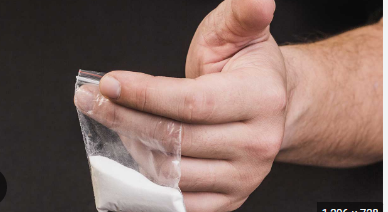
7 Common Names for Heroin with Other Drugs
Drugs such as LSC, Marijuana, Cocaine, Morphine, Ecstasy, and cold medication can be mixed with Heroin, and those mixtures have different names, such as Beast, Chocolate Chip Cookies, Snowball, Cheese, etc. Some commonly seen combinations and their street names are:
1. Marijuana and Heroin – A-bomb or Atom Bomb
Combining heroin and marijuana can have severe and potentially life-threatening effects on the body and mind. Both substances can cause intense sedation, respiratory depression, and cognitive and motor function impairment. Mixing these drugs can enhance these effects and increase the risk of overdose, which can be fatal.
2. Xanax and Heroin – Chocolate Bars
Heroin and Xanax can interact in ways that can be dangerous and unpredictable. For instance, Xanax can enhance the euphoric effects of heroin and cause the user to feel more disoriented or sedated than they would otherwise. On the other hand, heroin can decrease the effectiveness of Xanax, causing the user to take more of the drug than they need, which can increase the risk of overdose.
3. Cocaine and Heroin – Dragon Rock, Primo, Speedball, Dynamite, Belushi,
Crack cocaine is a stimulant drug that can increase heart rate, blood pressure, and body temperature, while heroin is a depressant drug that can slow down respiratory function and heart rate. Mixing these drugs can cause a rollercoaster effect on the body, where the stimulant effects of crack cocaine are quickly followed by the sedative effects of heroin and vice versa. It’s crucial to mention that mixing crack cocaine and heroin is highly dangerous and deadly.

Get Your Life Back
Find Hope & Recovery. Get Safe Comfortable Detox, Addiction Rehab & Mental Health Dual Diagnosis High-Quality Care at the We Level Up Treatment Centers Network.
Hotline (877) 378-41544. Heroin, Cocaine, Marijuana – El Diablo
The combination of heroin, cocaine, and marijuana can have unpredictable and dangerous effects on the body, including respiratory depression, heart attack, stroke, seizures, and coma. The risk of overdose is also significantly increased when these drugs are combined. All three drugs can negatively affect mental health and increase the risk of developing a substance use disorder.
5. Ecstasy and Heroin – H-Bomb
Mixing ecstasy, MDMA/molly and heroin can have severe and life-threatening effects. Ecstasy is an illicit stimulant that can increase heart rate, blood pressure, and body temperature. At the same time, heroin is a depressant drug that can slow down respiratory function and heart rate. Mixing these drugs can cause a devastating effect on the body, where the stimulant effects of the ecstasy are quickly followed by the sedative effects of the heroin and vice versa.
6. Heroin and LSD – Neon Nod
LSD is a hallucinogenic illicit drug that can cause altered perception, thoughts, and feelings, while heroin is a depressant drug that can slow down respiratory function and heart rate. Long-term use of LSD can lead to addiction, anxiety, depression, and flashbacks. Long-term use of heroin can cause physical dependence, addiction, and a range of health problems, such as liver and kidney damage, respiratory problems, and infectious diseases.
7. Heroin and Ritalin – Pineapple
Ritalin (methylphenidate) is a stimulant drug that can increase heart rate, blood pressure, and body temperature. At the same time, heroin is a depressant drug that can slow down respiratory function and heart rate. Combining these drugs can cause a rollercoaster effect on the body, where the stimulant effects of Ritalin are quickly followed by the sedative effects of heroin and vice versa.
Comfortable Facilities & Amenities
High-Quality Addiction & Mental Health Rehabilitation Treatment
Rehab Centers TourRenowned Addiction Centers. Serene Private Facilities. Inpatient rehab programs vary.
Addiction Helpline (877) 378-4154Proven recovery success experience, backed by a Team w/ History of:
15+
Years of Unified Experience
100s
5-Star Reviews Across Our Centers
10K
Recovery Success Stories Across Our Network
- Low Patient to Therapist Ratio
- Onsite Medical Detox Center
- Comprehensive Dual-Diagnosis Treatment
- Complimentary Family & Alumni Programs
- Coaching, Recovery & Personal Development Events
What Are The Different Types of Heroin?
Heroin is a highly addictive drug derived from the opium poppy plant. There are several types of heroin, each with different purity levels and effects on the body. Here are some of the most common types of heroin and their effects:
Black Tar Heroin
This type of heroin is a dark, sticky substance commonly produced in Mexico and sold in the western United States. Black tar heroin is often less pure than other types of heroin, which can increase the risk of infection and other health problems. The effects of black tar heroin include euphoria, relaxation, pain relief, and sedation.
White Powder Heroin
This type of heroin is a fine, white powder often cut with other substances, such as sugar, caffeine, or fentanyl. The effects of white powder heroin are similar to black tar heroin, including euphoria, relaxation, and pain relief.
Brown Powder Heroin
This type of heroin is a light brown powder that is usually less pure than white powder heroin. The effects of brown powder heroin are similar to black tar heroin and white powder heroin, including euphoria, relaxation, and pain relief.
Regardless of the type of heroin, the drug can have severe and potentially life-threatening effects on the body, including respiratory depression, heart attack, stroke, and infectious diseases. Long-term use of heroin can also lead to physical dependence, addiction, and a range of health problems, such as liver and kidney damage, respiratory problems, and infectious diseases. It’s essential to seek help from a healthcare professional or addiction treatment center if you or someone you know is struggling with heroin use.
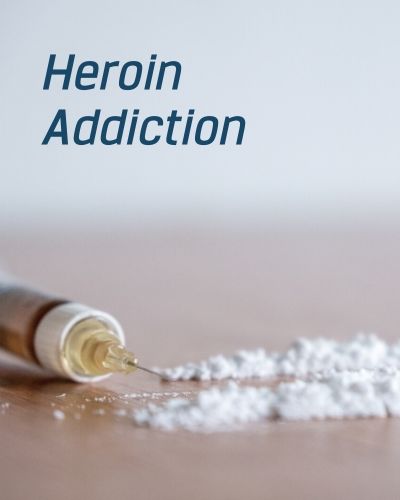
World-class, Accredited, 5-Star Reviewed, Effective Addiction & Mental Health Programs. Complete Behavioral Health Inpatient Rehab, Detox plus Co-occuring Disorders Therapy.
CALL (877) 378-4154End the Addiction Pain. End the Emotional Rollercoaster. Get Your Life Back. Start Drug, Alcohol & Dual Diagnosis Mental Health Treatment Now. Get Free No-obligation Guidance by Substance Abuse Specialists Who Understand Addiction & Mental Health Recovery & Know How to Help.
What Does Heroin Look Like?
Heroin can come in various forms and look different depending on the type and purity of the drug. Here are some joint physical appearances of heroin:
Powder Form
Heroin powder can be found in colors, from white to dark brown. The color may depend on the manufacturing process or other substances mixed in with the drug. It is often sold in small glassine baggies, wax paper, or foil.
Solid Form
Heroin can be found in solid chunks or “rocks,” typically brown or off-white. This form is often called black tar heroin and is commonly found in the western United States.
Pills or Capsules
Heroin can also be found in pill or capsule form, which may be sold on the street or obtained through illegal sources.
It’s important to note that heroin can be cut with other substances, such as fentanyl or other opioids, which can increase the risk of overdose and other health problems. Additionally, the purity and appearance of heroin can vary widely, making it difficult for users to know what they are getting and how potent the drug is. It’s essential to seek help from a healthcare professional or addiction treatment center if you or someone you know is struggling with heroin use.
Experience Transformative Recovery at the We Level Up Treatment Center.
See our authentic success stories. Get inspired. Get the help you deserve.



Start a New Life
Begin with a free call to an addiction & behavioral health treatment advisor. Learn more about our dual-diagnosis programs. The We Level Up treatment center network delivers various recovery programs at each treatment facility. Call to learn more.
- Personalized Care
- Caring Accountable Staff
- Comfortable Amenities
- Licensed & Accredited
- Renowned w/ 5-Star Reviews
We’ll Call You
Heroin Addiction Treatment Near Me
Heroin addiction is a chronic disease and should be treated like other chronic diseases. Like those, it should constantly be monitored and managed. Heroin is a type of opioid. Opioid addiction treatment is different for each individual. The primary purpose of opioid addiction treatment is to help the person stop using the drug. Opioid addiction treatment can also help the person avoid using it again.
The body goes through specific symptom stages known as opiate withdrawal. The opiate withdrawal timeline varies from a few days to a few weeks, depending on the type of opioid used, how long it was used, and any other substances that may have been used with opioids. Medically managed withdrawal opiate detox ensures the individual remains safe and stays as comfortable as possible.
Heroin Detox Treatment
The first step in treatment is medical detox. It will help you navigate the complicated withdrawal process but doesn’t address patterns of thought and behavior contributing to heroin addiction. Various treatment approaches and settings can help provide the ongoing support necessary to maintain long-term sobriety after you complete detox.
Cravings are very common during detox and can be challenging to overcome. This often leads to relapse. Constant medical care provided during inpatient treatment helps prevent relapse. Clinicians can give the necessary medication and medical expertise to lessen cravings and the effects of withdrawals.
Inpatient Treatment for Heroin Addiction
There isn’t one treatment approach or style that will suit everyone. Treatment should speak to the needs of the individual. Inpatient drug rehab and addiction treatment aren’t just about drug or alcohol use. The goal is to help the person stop using drugs like heroin. Drug and alcohol rehab should also focus on the whole person’s needs.
Addiction is a complex but treatable disease that affects brain function and behavior. When someone or their family is considering different treatment facilities, they should account for the complexity of addiction and the needs of the individual. The objective of attending an inpatient drug and alcohol rehab center for addiction treatment is to stop using the drug and re-learn how to live a productive life without it.
Most people benefit from inpatient rehab after a full medical detox from drugs and alcohol. Inpatient drug rehab can last anywhere from 28 days to several months. Patients stay overnight in the rehab facility and participate in intensive treatment programs and therapy. Once someone completes rehab, their addiction treatment team will create an aftercare program, including continuing therapy and participation in a 12-step program like Alcoholics Anonymous and Narcotics Anonymous.
Psychotherapy
Many rehab programs will also have early morning classes or programs. Group sessions occur during inpatient rehab, as do individual therapy sessions. Family therapy may be part of inpatient rehab when it’s feasible. Alternative forms of therapy may be introduced during inpatient rehab, like a holistic therapy program, yoga for addiction recovery, or addiction treatment massage therapy.
Several different modalities of psychotherapy have been used in the treatment of mental health disorders along with addiction, including:
- Cognitive Behavioral Therapy (CBT) – is an effective treatment that involves changing both the patterns of negative thoughts and the behavioral routines which are affecting the daily life of the depressed person for various forms of depression.
- Dialectical Behavioral Therapy (DBT) – is a comprehensive mental health and substance abuse treatment program whose ultimate goal is to aid patients in their efforts to build a life worth living. The main goal of DBT is to help a person develop what is referred to as a “clear mind.”
- Solution-focused therapy is an approach interested in solutions that can be quickly implemented with a simple first step leading to further positive consequences.

Dual Diagnosis Treatment
Drug abuse and mental health disorders often co-occur. Traumatic experiences can often result in a mental health disorder and substance abuse. Dual diagnosis rehabilitation treats both of these issues together. The best approach for the treatment of dual diagnosis is an integrated system. This strategy treats both the substance abuse problem and the mental disorder simultaneously. Regardless of which diagnosis (mental health or substance abuse problem) came first, long-term recovery will depend mainly on the treatment for both diseases done by the same team or provider.
Medication Assisted Treatments (MAT)
Medication-Assisted Treatments (MAT) for substance use and mental health disorders are commonly used in conjunction with one another. This includes the use of medications and other medical procedures. During your rehab, the staff from your treatment facility will help you identify what caused your addiction and teach you skills that will help you change your behavior patterns and challenge the negative thoughts that led to your addiction. Sometimes, the pressures and problems in your life lead you to rely on substances to help you forget about them momentarily.
Please, do not try to detox on your own. The detox process can be painful and difficult without medical assistance. However, getting through the detox process is crucial for continued treatment. We Level Up provide proper care with round-the-clock medical staff to assist your recovery through our opioid addiction treatment program medically. So, reclaim your life, and call us to speak with one of our treatment specialists. Our counselors know what you are going through and will answer any of your questions.
Search We Level Up NJ “Heroin Street Names, Slang, & Nicknames” Topics & Resources
Sources
[2] How Long Does Heroin Stay in Your System? – We Level Up New Jersey Addiction Treatment Center In relation to the topic: Slang Word for Heroin
[3] Huecker MR, Koutsothanasis GA, Abbasy MSU, et al. Heroin. [Updated 2022 Sep 9]. In: StatPearls [Internet]. Treasure Island (FL): StatPearls Publishing; 2022 Jan-. Available from: https://www.ncbi.nlm.nih.gov/books/NBK441876/ Tag: Heroin Other Names
[4] Oelhaf RC, Azadfard M. Heroin Toxicity. [Updated 2022 May 15]. In: StatPearls [Internet]. Treasure Island (FL): StatPearls Publishing; 2022 Jan-. Available from: https://www.ncbi.nlm.nih.gov/books/NBK430736/ Tag: Nick Names for Heroin
[5] Hosztafi S. A heroin addikció [Heroin addiction]. Acta Pharm Hung. 2011;81(4):173-83. Hungarian. PMID: 22329304. Tag: Heroin Names List
[6] Heroin DrugFacts – National Institute on Drug Abuse (NIDA) In relation to the topic: Tag: What are street names for heroin?
[7] Addiction and Substance Misuse Reports and Publications – U.S. Department of Health & Human Services In relation to the topic:
[8] Azadfard M, Huecker MR, Leaming JM. Opioid Addiction. [Updated 2022 Sep 9]. In: StatPearls [Internet]. Treasure Island (FL): StatPearls Publishing; 2022 Jan-. Available from: https://www.ncbi.nlm.nih.gov/books/NBK448203/ Tag: What is the street name for heroin?
[9] Dydyk AM, Jain NK, Gupta M. Opioid Use Disorder. [Updated 2022 Jun 21]. In: StatPearls [Internet]. Treasure Island (FL): StatPearls Publishing; 2022 Jan-. Available from: https://www.ncbi.nlm.nih.gov/books/NBK553166/ Tag:
[10] Opioid addiction: MedlinePlus Genetics – U.S. Department of Health and Human Services National Institutes of Health In relation to the topic:
